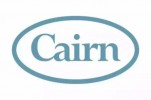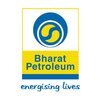Filter interviews by
Arabian Fal Mechanical Engineer Interview Questions and Answers
Arabian Fal Mechanical Engineer Interview Experiences
1 interview found
(1 Question)
- Q1. Coating defects
Top trending discussions






Interview questions from similar companies

I applied via Naukri.com and was interviewed before Jun 2020. There was 1 interview round.
Interview Questionnaire
28 Questions
- Q1. What is mean by safety
- Ans.
Safety refers to the condition of being protected from harm, danger, or injury.
Safety involves taking measures to prevent accidents and injuries
It includes following rules and regulations to ensure a safe environment
Safety can be achieved through proper training and education
Examples of safety measures include wearing protective gear, using safety equipment, and practicing safe behaviors
Safety is important in all indus...
- Q2. What is LEL
- Ans.
LEL stands for Lower Explosive Limit and is the minimum concentration of a gas or vapor in air that can ignite.
LEL is a safety term used in industries dealing with flammable gases and liquids.
It is expressed as a percentage of the gas or vapor in air.
If the concentration of the gas or vapor is below the LEL, it is too lean to ignite.
If the concentration is above the LEL, it is too rich and can ignite.
For example, the L...
- Q3. What is RA
- Q4. What is JSA/JHA
- Ans.
JSA/JHA stands for Job Safety Analysis/Job Hazard Analysis. It is a process of identifying potential hazards and risks in a job or task.
JSA/JHA is a systematic approach to identify and mitigate potential hazards in a job or task
It involves breaking down a job or task into steps and analyzing each step for potential hazards
The analysis includes identifying the hazards, assessing the risks, and implementing controls to m...
- Q5. Role of HSE
- Ans.
HSE plays a crucial role in ensuring the safety and well-being of employees and the environment.
HSE stands for Health, Safety, and Environment.
It involves identifying and assessing potential hazards and implementing measures to control or eliminate them.
HSE also includes training employees on safety procedures and emergency response plans.
Examples of HSE measures include wearing personal protective equipment, conductin...
- Q6. What is Hchem
- Ans.
Hchem is not a known term or acronym in the engineering field.
Hchem is not a commonly used term in engineering
It is possible that the interviewer misspoke or meant to ask a different question
Without more context, it is difficult to provide a more specific answer
- Q7. What is Hazop
- Ans.
Hazop is a structured and systematic technique used to identify potential hazards and operability problems in industrial processes.
Hazop stands for Hazard and Operability Study
It involves a team of experts analyzing a process to identify potential hazards and operability issues
Hazop is commonly used in the chemical, oil and gas, and pharmaceutical industries
The process involves breaking down the process into smaller pa...
- Q8. What is confined space
- Ans.
Confined space refers to an area that is enclosed and has limited access and ventilation.
Examples include tanks, silos, sewers, and tunnels.
Workers entering confined spaces must follow safety protocols and use specialized equipment.
Hazards in confined spaces include lack of oxygen, toxic gases, and physical obstructions.
Proper training and communication are crucial for working in confined spaces.
- Q9. What is work at height
- Ans.
Work at height refers to any task performed at a height where a person could fall and injure themselves.
Work at height involves working on ladders, scaffolding, roofs, or any other elevated surface
It is important to use appropriate safety equipment such as harnesses, guardrails, and safety nets
Workers should be trained on how to safely work at height and how to properly use safety equipment
Examples of work at height in...
- Q10. Hazard of confined space
- Ans.
Confined spaces pose a significant hazard due to limited entry and exit points, poor ventilation, and potential for hazardous substances.
Limited entry and exit points can make it difficult to escape in case of an emergency
Poor ventilation can lead to a buildup of toxic gases or lack of oxygen
Potential for hazardous substances such as chemicals, fumes, or dust
Examples include tanks, silos, sewers, and tunnels
Proper trai...
- Q11. Precautions of confined space
- Ans.
Precautions to be taken while working in confined spaces
Proper ventilation and air quality testing
Use of personal protective equipment
Proper lighting and communication equipment
Training and certification for workers
Emergency rescue plan in place
- Q12. What is LEL&UEL
- Ans.
LEL&UEL stands for Lower Explosive Limit and Upper Explosive Limit respectively. They are the minimum and maximum concentrations of a flammable gas or vapor in air that can ignite.
LEL is the lowest concentration of a gas or vapor that can ignite
UEL is the highest concentration of a gas or vapor that can ignite
Concentrations between LEL and UEL are considered flammable
LEL and UEL vary depending on the gas or vapor
LEL an...
- Q13. What is competent person
- Q14. What is fire
- Ans.
Fire is a chemical reaction that releases heat, light, and various gases.
Fire is a rapid oxidation process that occurs when fuel (such as wood, paper, or gasoline) combines with oxygen in the presence of heat or a spark.
It releases heat, light, and various gases such as carbon dioxide, water vapor, and nitrogen oxides.
Fire can be beneficial (such as for cooking or heating) or destructive (such as in wildfires or house ...
- Q15. Types of fire
- Ans.
There are four types of fire: Class A, Class B, Class C, and Class D.
Class A fires involve ordinary combustibles such as wood, paper, or cloth.
Class B fires involve flammable liquids or gases such as gasoline, oil, or propane.
Class C fires involve electrical equipment such as appliances, wiring, or circuit breakers.
Class D fires involve combustible metals such as magnesium, titanium, or sodium.
- Q16. Type of extinguisher
- Ans.
There are different types of fire extinguishers for different types of fires.
Water extinguishers for Class A fires (wood, paper, cloth, etc.)
CO2 extinguishers for Class B and C fires (flammable liquids and electrical fires)
Dry chemical extinguishers for Class A, B, and C fires
Foam extinguishers for Class A and B fires
Wet chemical extinguishers for Class K fires (cooking oils and fats)
- Q17. Modes of heat transfer
- Ans.
Modes of heat transfer include conduction, convection, and radiation.
Conduction is the transfer of heat through a material without any movement of the material itself.
Convection is the transfer of heat through the movement of fluids, such as air or water.
Radiation is the transfer of heat through electromagnetic waves, such as from the sun or a fire.
- Q18. How to prevent fire
- Ans.
Preventing fire requires proper handling of flammable materials and regular maintenance of electrical equipment.
Store flammable materials in designated areas away from heat sources
Regularly inspect and maintain electrical equipment
Install smoke detectors and fire extinguishers in appropriate locations
Train employees on fire safety procedures and evacuation plans
- Q19. What is msds
- Ans.
MSDS stands for Material Safety Data Sheet.
MSDS provides information about hazardous chemicals and substances.
It includes information about the physical and chemical properties of the substance, health hazards, precautions for safe handling and use, and emergency procedures.
MSDS is required by law for all hazardous chemicals and substances used in the workplace.
It is important to read and understand the MSDS before usi...
- Q20. How to do firefighting
- Ans.
Firefighting involves identifying and extinguishing fires to prevent damage and loss of life.
Assess the situation and determine the type and size of fire
Use appropriate firefighting equipment such as fire extinguishers, hoses, and pumps
Follow safety protocols and wear protective gear
Coordinate with other firefighters and emergency responders
Evacuate people from the affected area
Monitor the situation and ensure the fire
- Q21. How to prevent the accident
- Ans.
Prevent accidents by identifying potential hazards and implementing safety measures.
Conduct regular safety audits and risk assessments
Provide proper training and education to employees
Implement safety protocols and procedures
Use appropriate safety equipment and gear
Encourage a culture of safety and accountability
Regularly review and update safety policies and procedures
- Q22. How to investigate the accident
- Ans.
To investigate an accident, follow a systematic approach involving data collection, analysis, and identification of root causes.
Gather all available information about the accident, including eyewitness accounts, photographs, and any relevant documents or records.
Conduct interviews with individuals involved in the accident to gather their perspectives and insights.
Examine the accident scene for physical evidence, such a...
- Q23. Emergency procedure
- Q24. What is H2s
- Ans.
H2S is a colorless, flammable, and toxic gas with a strong odor of rotten eggs.
H2S is commonly known as hydrogen sulfide.
It is produced naturally by the breakdown of organic matter and is found in natural gas, crude oil, and volcanic gases.
It is highly toxic and can cause respiratory failure, loss of consciousness, and even death.
H2S is used in various industries such as oil and gas, mining, and pulp and paper.
It is al...
- Q25. Properties of H2s
- Ans.
H2S is a colorless, flammable, and toxic gas with a strong odor of rotten eggs.
H2S is highly flammable and can ignite easily
It is toxic and can cause respiratory failure
It has a distinctive odor of rotten eggs
H2S is used in the production of sulfuric acid and in the petroleum industry
- Q26. Hirerchy procedure
- Q27. Permissible exposure limit of H2s,co,co2,methane
- Ans.
Permissible exposure limits (PEL) are the maximum allowable concentrations of hazardous substances in the workplace.
H2S: PEL is 10 ppm (parts per million) over an 8-hour workday
CO: PEL is 50 ppm over an 8-hour workday
CO2: No specific PEL, but recommended exposure limit is 5,000 ppm over an 8-hour workday
Methane: No specific PEL, but recommended exposure limit is 1,000 ppm over an 8-hour workday
- Q28. Short term exposure limit of H2s
- Ans.
Short term exposure limit (STEL) of H2S is 10 ppm.
STEL is the maximum concentration of a substance that a worker can be exposed to for a short period of time without suffering from immediate or long-term health effects.
The STEL for H2S is set at 10 ppm (parts per million) by OSHA (Occupational Safety and Health Administration).
Exposure to H2S at levels above the STEL can cause symptoms such as eye irritation, headache,...
Interview Preparation Tips

I applied via Campus Placement and was interviewed in Jul 2024. There were 2 interview rounds.
(3 Questions)
- Q1. Tell me about yourself
- Ans.
I am a dedicated Mechanical Engineer with a passion for problem-solving and innovation.
Graduated with a degree in Mechanical Engineering from XYZ University
Experienced in designing and testing mechanical systems
Proficient in CAD software such as SolidWorks and AutoCAD
Strong analytical skills and attention to detail
Worked on projects like designing a new cooling system for a car engine
- Q2. Favorite subject
- Ans.
My favorite subject is Thermodynamics because I enjoy studying the transfer of energy and heat.
I find the laws of thermodynamics fascinating
I enjoy analyzing heat transfer processes
I like studying the relationship between energy and work
- Q3. Scavenging, spoliers, gas cycles, etc.
(2 Questions)
- Q1. Biggest achievement
- Ans.
Designed and implemented a new cooling system for a high-performance engine, increasing efficiency by 15%.
Led a team of engineers to analyze current cooling system performance
Designed a new cooling system using advanced simulation software
Implemented the new system on a prototype engine and conducted performance tests
Achieved a 15% increase in efficiency compared to the previous system
- Q2. Have you any time involved in decision making, can be during any task
- Ans.
Yes, I have been involved in decision making during various tasks.
I have made decisions regarding design changes in projects to improve efficiency.
I have been part of a team that had to decide on the best approach to solve a technical problem.
I have made decisions on prioritizing tasks to meet project deadlines.
I have been involved in selecting the most suitable materials for a project based on cost and performance req
Interview Preparation Tips

I applied via Company Website and was interviewed in Nov 2021. There were 4 interview rounds.
Interview Questionnaire
2 Questions
- Q1. About work experience and responsibilities
- Q2. Why you are leaving to present job
Interview Preparation Tips

(3 Questions)
- Q1. What is yield strength and ultimate strength
- Ans.
Yield strength is the stress at which a material begins to deform plastically, while ultimate strength is the maximum stress a material can withstand before breaking.
Yield strength is the point where a material starts to deform plastically, meaning it will not return to its original shape once the stress is removed.
Ultimate strength is the maximum stress a material can withstand before it breaks or fractures.
Yield stre...
- Q2. All FEA related questions
- Q3. All basic SOM and SHEET METAL RELATED QUESTIONS
Interview Preparation Tips

I applied via Campus Placement and was interviewed before Sep 2022. There were 3 interview rounds.

(1 Question)
- Q1. What would you do if the design called for tight tolerances and the part was manufactured out of tolerance
- Ans.
I would assess the impact of the out-of-tolerance part and determine if it can still function within acceptable limits or if it needs to be reworked or replaced.
Assess the functionality of the part with the out-of-tolerance dimensions
Determine if the part can still meet the overall design requirements despite being out of tolerance
Consider the potential impact on the performance and safety of the final product
Consult w...
(1 Question)
- Q1. Tell me what you see about his drawing
- Ans.
The drawing appears to be a mechanical component with multiple parts and dimensions.
The drawing includes various geometric shapes such as circles, rectangles, and lines.
There are labels indicating dimensions and measurements for each part.
The drawing may also include annotations or symbols representing different materials or processes.
It seems to be a detailed technical drawing for manufacturing or assembly purposes.
Skills evaluated in this interview

I applied via Company Website and was interviewed in Aug 2022. There were 3 interview rounds.

(1 Question)
- Q1. Basic Question related to mechanical basics
(2 Questions)
- Q1. Tell me about yourself
- Q2. Strength & Weakness, Where you see 5 years from now.
Interview Preparation Tips

I applied via Company Website and was interviewed in May 2024. There were 2 interview rounds.
Behavioral questions and resume delve
Pmi - product management information
Interview Preparation Tips

I appeared for an interview before Feb 2024.
(2 Questions)
- Q1. Tell me about Pumps
- Q2. Can you design a pump with its specifications parameters

I applied via Naukri.com and was interviewed in Oct 2020. There were 3 interview rounds.
Interview Questionnaire
1 Question
- Q1. The HR round was very pathetic. Sreethala took my HR round.
Interview Preparation Tips
Mumbai location. They will take all the interview rounds. The HR will ask you to submit all documents and last moment they will cancel your candidature without giving you any specific reason.
Arabian Fal Interview FAQs
Tell us how to improve this page.
Arabian Fal Interviews By Designations
Interview Questions for Popular Designations
- Mechanical Maintenance Engineer Interview Questions
- Diploma Mechanical Engineer Interview Questions
- Mechanical Technician Interview Questions
- Senior Engineer Mechanical Interview Questions
- Mechanical Supervisor Interview Questions
- Junior Mechanical Engineer Interview Questions
- Mechanical Fitter Interview Questions
- Mechanical Maintenance Fitter Interview Questions
- Show more
Arabian Fal Mechanical Engineer Interview Process
based on 1 interview
Interview experience
Interview Questions from Similar Companies
Arabian Fal Mechanical Engineer Reviews and Ratings
based on 14 reviews
Rating in categories
|
Mechanical Engineer
17
salaries
| ₹4.8 L/yr - ₹8.5 L/yr |
|
Planning Engineer
10
salaries
| ₹7 L/yr - ₹12 L/yr |
|
Safety Officer
9
salaries
| ₹5 L/yr - ₹11 L/yr |
|
Mechanical Supervisor
6
salaries
| ₹4.7 L/yr - ₹8 L/yr |
|
Instrument Engineer
6
salaries
| ₹0.9 L/yr - ₹9 L/yr |

Bharat Petroleum

Hindustan Petroleum

Petrofac

Schlumberger
- Home >
- Interviews >
- Arabian Fal Interview Questions >
- Arabian Fal Mechanical Engineer Interview Questions









